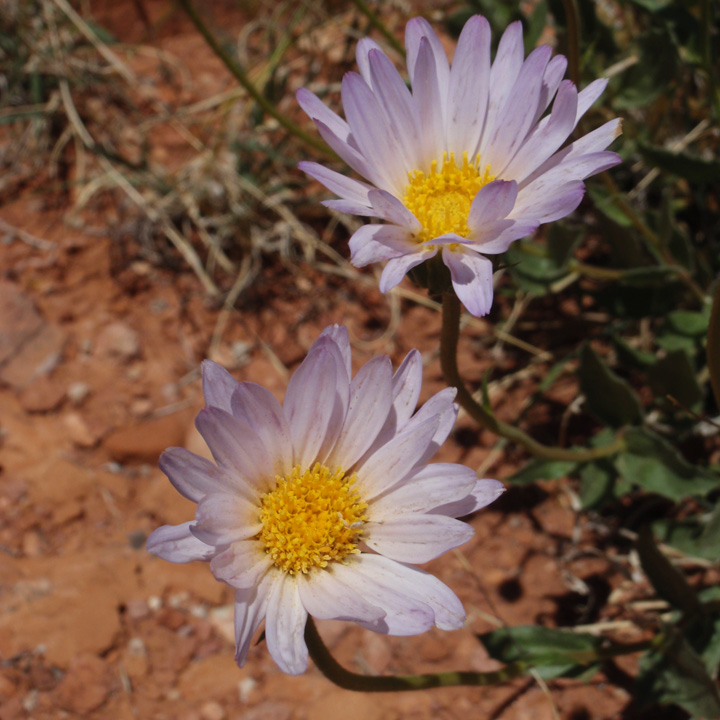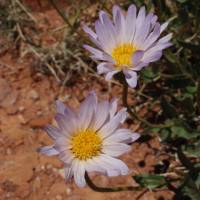Perennials, subshrubs, or shrubs, 10-80(-150) cm (taproots woody, branched, caudices persistent). Stems (often white-barked) erect, branched, glabrous or villous to tomentose, sometimes stipitate-glandular. Leaves cauline; alternate; sessile or subpetiolate; blades mostly 1-nerved, linear to lanceolate or oblanceolate, oblong, or narrowly elliptic, margins entire or dentate-spinulose (apices acute), faces glabrous or sparsely tomentose to villous, sometimes stipitate-glandular. Heads radiate, borne singly (terminal on ebracteate peduncles). Involucres campanulate to hemispheric, 7-20 × 12-40(-48) mm. Phyllaries 25-45 in 3-6 series, 1-nerved (keeled), narrowly lanceolate, unequal, proximally white-indurate, margins scarious (apices green, erect or spreading), abaxial faces glabrous or sparsely tomentose to villous, sometimes stipitate-glandular. Receptacles flat, pitted, epaleate. Ray florets (4-)12-60(-85), pistillate, fertile; corollas white to light blue or purple (coiling at maturity). Disc florets 30-140, bisexual, fertile; corollas yellowish, tubes slightly shorter to longer than narrowly funnelform throats, lobes 5, spreading, triangular; style-branch appendages lanceolate. Cypselae (brownish) fusiform to linear or ovoid, ± compressed to subterete, 4-ribbed, faces sericeous (hairs subappressed, long, silky); pappi persistent, of 30-45 tawny, stout, unequal, often flattened, barbellate, apically attenuate bristles in 2-3 series. x = 6.
Xylorhiza species were considered by A. Cronquist and D. D. Keck (1957) to be primitive members of the genus Machaeranthera, where they were recently maintained (Cronquist 1994). T. J. Watson (1977) and other contemporary botanists, however, have recognized Xylorhiza as a distinct genus characterized by the following features: perennial herbs, subshrubs, and shrubs from large, woody taproots with woody, branched, persistent caudices; large, single heads; long phyllaries with erect or spreading apices; white or bluish rays; large cypselae; and vernal flowering. The base chromosome number of Xylorhiza (x = 6) also contrasts with that of Machaeranthera (x = 4 or 5). Two sections were recognized by Watson: sect. Xylorhiza (subshrubs or perennial herbs) and sect. Californica T. J. Watson (shrubs, including X. cognata, X. orcuttii, and the Mexican endemic X. frutescens).







